For a number of different reasons, antique teacups continue to be among the most desirable collectibles. Due to the delicate nature of their designs and the reasonable rates at which they are sold, these teacups will remain popular for a considerable amount of time in the future.
Additionally, antique teacups may be rather expensive. Learning what makes teacups unusual and interesting for those who are interested in antiques is essential to the acquisition of these little gems.
The majority of millennials have spent their childhoods in homes that maintained an almost top-secret service consisting of tea cups and saucers that were stored away and only used for ceremonial or festive purposes.
Even while collecting vintage teacups isn’t as popular as it once was, there is still a sizable community dedicated to the hobby online. Certain manufacturers are still super important.
Some individuals are antique collectors and acquire ancient teacups to add to their collection of collectibles, while others just want to drink tea out of a beautiful piece of art and do not care whether it adds value to their collection or not.
In this post, we will have detailed information about collecting and selling antique teacups, including their history, prominent brands, and the elements that influence the value of these teacups.
Table of Contents
History of Antique Teacups
Tea cups from the 1700s Get Handles
During the 1600s, tea started to gain popularity in Europe. A number of industry professionals are of the opinion that practical considerations were the driving force behind the invention of the handle.
People were able to grasp the piping hot cup of tea without the risk of getting their hands burnt thanks to the handle. On the other side, there are other historians who believe that the handle was just added as a fashion statement.
In any case, the handled teacup appeared somewhere in the 1700s.
The Bone China Industry Transforms the Antique Teacup in the 1800s
The invention of bone china in the early to middle of the 1800s made it simpler to construct strong, delicate designs. Bone china was first used to make porcelain. Teacups were able to have more elaborate decorations because of this, and they were also more resilient.
Tea drinkers’ minds were grabbed when manufacturers manufactured whole tea sets made of bone china, which altered the appearance of this fashionable drinkware for all time.
During the Victorian era, tea and the custom of taking tea reached their apex. It was common practice among women of the upper class to present one another with tea cups and saucers as presents.
Gifts were presented in the form of cups at a variety of events, including weddings, home warmings, and bridal showers.
The 1900s: Teabags Put an End to the Tea cup Industry
When tea bags were first introduced in the 1920s, they encouraged consumers to drink their tea out of bigger mugs rather than more delicate porcelain teacups. This was due to the convenience of the tea bags.
A feeling of historical whimsy and fanciness was imbued into the tea cup, transforming it from a utilitarian item of daily china into something more elegant. However, despite this, it continued to be a sought-after item among collectors.
How do I identify an antique tea cup?
When shopping for antiques or browsing at flea markets, it is crucial to be able to identify an antique teacup when you come across one. Take into account the following:
Teacups or coffee cups
The difference between coffee cups and tea cups is not always clear, since tea cups are often confused with coffee cups. The handle of the antique tea cup will often be elevated and may be decorated in a highly artistic manner.
Tea cups will always come with a matching saucer, as they always have in the past. In addition to this, coffee mugs are not as fragile as these ones.
Antiques or replicas
There are still many china producers who produce tea cups, thus it is essential to be able to identify which examples are old or antique and which are more recent.
You’ll discover that older ones are often more delicate, and they also have a patina that was earned through years of usage. This might manifest itself as a minor roughness around the base, a few tiny scratches, or a slight softening of the hand painting or gilding.
Bone china or porcelain
Old tea cups may be crafted from a variety of materials, the most popular of which are bone china and porcelain. Teacups can also be manufactured from other materials.
Holding a teacup up to the light to check whether shadows can be seen through it is one way to determine whether or not it is made of bone china. Bone china is often more precious than porcelain, so go for it if you have the option.
How do I know if my old tea cups are valuable?
The price of antique and vintage teacups may range widely depending on their condition and rarity. Some sell for as little as a few dollars, while others might go for as much as one hundred dollars or more.
Whether something has acquired you grandmother’s china or if you have purchased a tea set at a garage sale, you may be curious about the value of your collection of tea cups and saucers. If you are curious about the value of your bone china, there are a few aspects of its condition, age, and rarity that should be taken into consideration.
Taking into consideration the Situation
A teacup that is in great condition but is missing a decoration or has a glaze that is scratched, cracked, or crazed will always be valued far more than an identical teacup that is not in such good shape.
If you have a teacup that is in pristine condition, you could find that it is quite valuable.
Keep age in mind
In most cases, teacups that are older will have a higher value than those that are more recent. In the event that a design is still being manufactured, older instances of it can be more valuable, given that they are in excellent shape.
One of the most desirable types of old tea cups is really antique ones, particularly ones that were produced at least 200 years ago. They have the greatest value.
Keep an eye out for particular designs and manufacturers
Spend some time doing some research to figure out who made your teacup and what design it is. Some of them, like early French Limoges or stunning specimens of Meissen, might be worth an incredible amount of money.
Examine your teacup next to other cups of the same kind
Comparing your teacup stamp to others that have recently been purchased is one of the most effective methods to ascertain how much it is worth. You should focus on teacups that have already been purchased rather than looking at ones that are presently on the market.
You are able to search eBay for previously owned teacups that match your design and have been sold, such as the following:
- An almost $700 price tag was placed on a Royal Doulton teacup that had enamel and raised gilding. It was from 1890 and in pristine shape all the way through.
- A teacup without any markings that looked to be from the Limoges area of France brought in close to $230 at auction. It was embellished with gold from 24 carats and was in pristine condition.
- A Haviland teacup that was in good condition and had twin handles and gold trim for around $35.
Most Valuable Vintage Teacup Collection
Some producers are particularly well-known for the quality of their antique china, and many of their designs are very desirable. Flipping old tea cups over will tell you who manufactured them in the form of stamp if you’re wondering about that.
On the bottom, you will find stamps or marks that might assist you in identifying the maker as well as the design and, in some cases, the year it was manufactured. The marks on a teacup may seem different from one another, yet they often provide information.
There are literally hundreds of different brands and names for vintage and antique teacups, but the following are some of the most well-known manufacturers and the most well-known designs from those brands.
Royal Doulton
If you’re wondering about it, it is a well-known manufacturer of exquisite china that has been in business for more than two centuries and continues to produce stunning teacups even in modern times.
Depending on the year, the company mark may look somewhat different, but it will almost always consist of a seal with the firm name and topped with a crown and a lion. On the underside of some of these beautiful teacups, you could also see the pattern’s name written out.
It presents some of the occupied japan tea cups and saucers patterns and styles.
1. Carlyle: Carlyle is a design that was introduced in 1972, and it can be seen on vintage teacups. It has a gorgeous teal border with blue flowers and gold foliage.
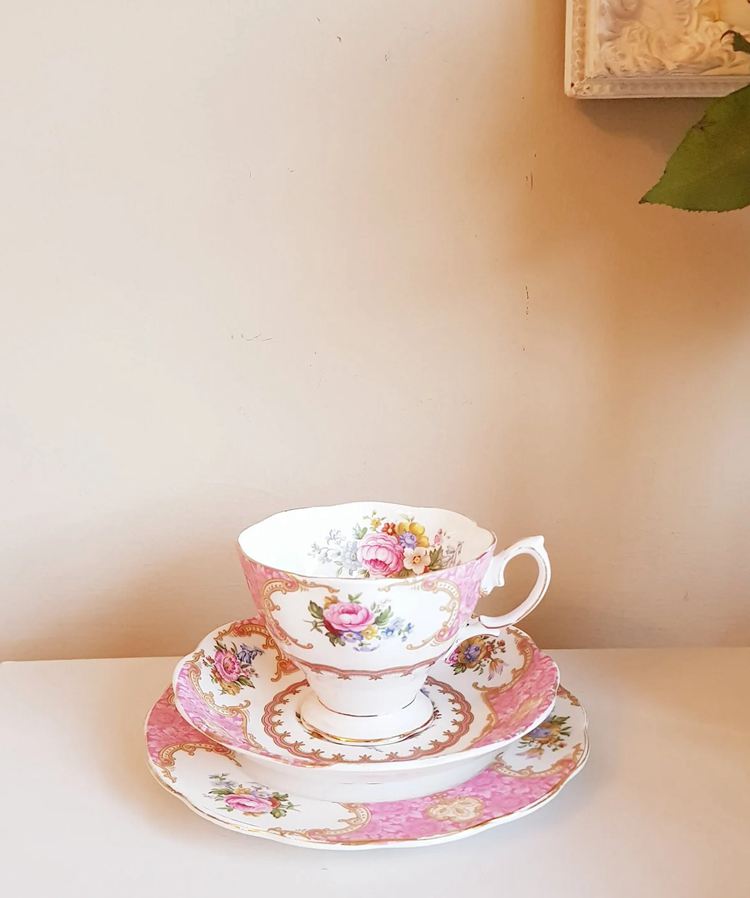
2. Vintage design: The vintage design, which was first introduced in 1985, is called Brambly Hedge. It features animals, vines, and blackberries.
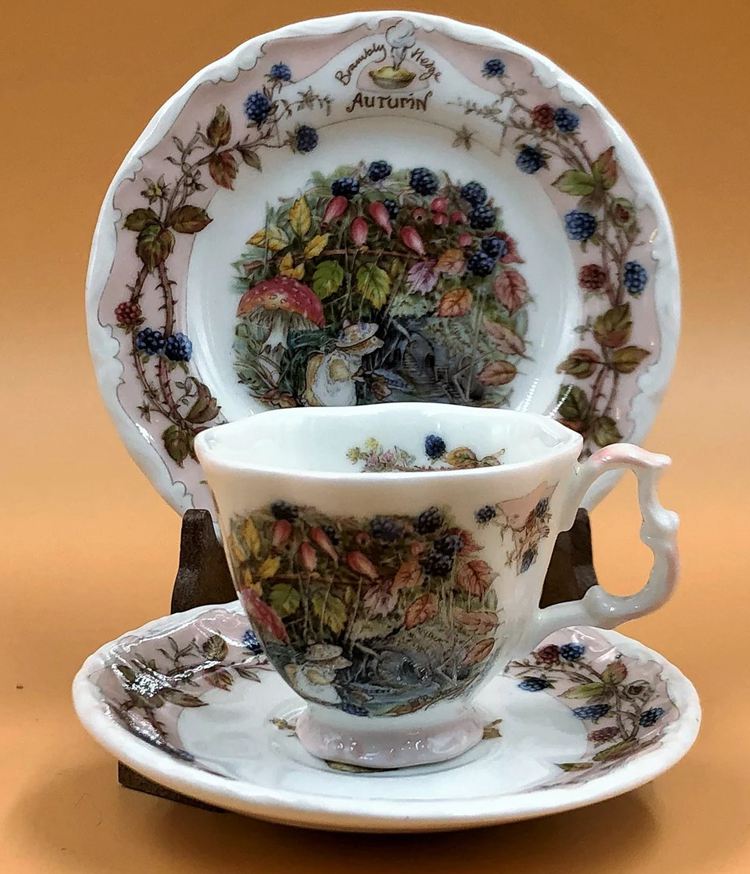
3. Coronet: It is a relatively straightforward design from 1957, with a basic white backdrop with a gray scroll pattern overlaid on top of it.
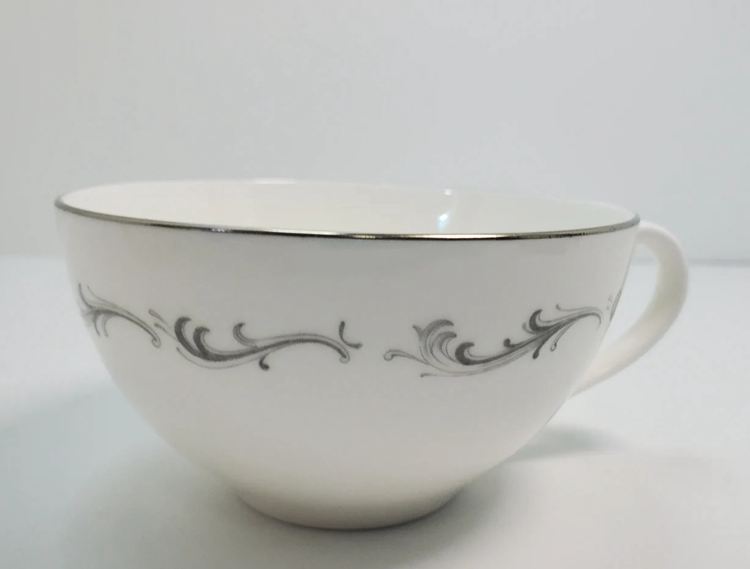
Limoges
In a strict sense, this manufacturer does not refer to a single factory but rather to a collection of factories that are located in the Limoges area of France. To make matters even more confusing, there are also certain designs that are manufactured in the United States by Limoges-American.
It might be difficult to distinguish these teacup markings due to the fact that there were really a great number of manufacturers who contributed to the production of Limoges china.
Even so, Limoges teacups may be among the most precious items for collectors, which is why it’s necessary to have some knowledge of the designs you can come across. The following are some of the most well-known:
4. Wild rose: These Limoges-American styles are called Wild Rose, and they boast a scalloped edge along with pink blooms that are painted on a white backdrop.
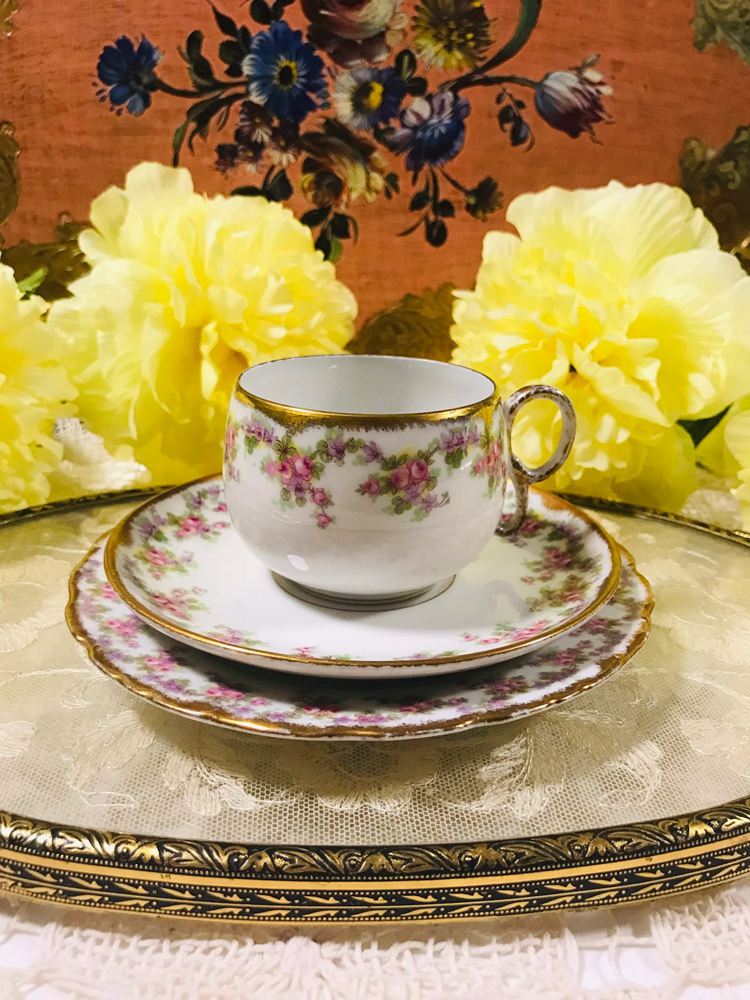
5. FXL5: This ancient design from French Limoges is quite stunning. It has a white background, and pink and green flowers are arranged in sprays over the pattern.
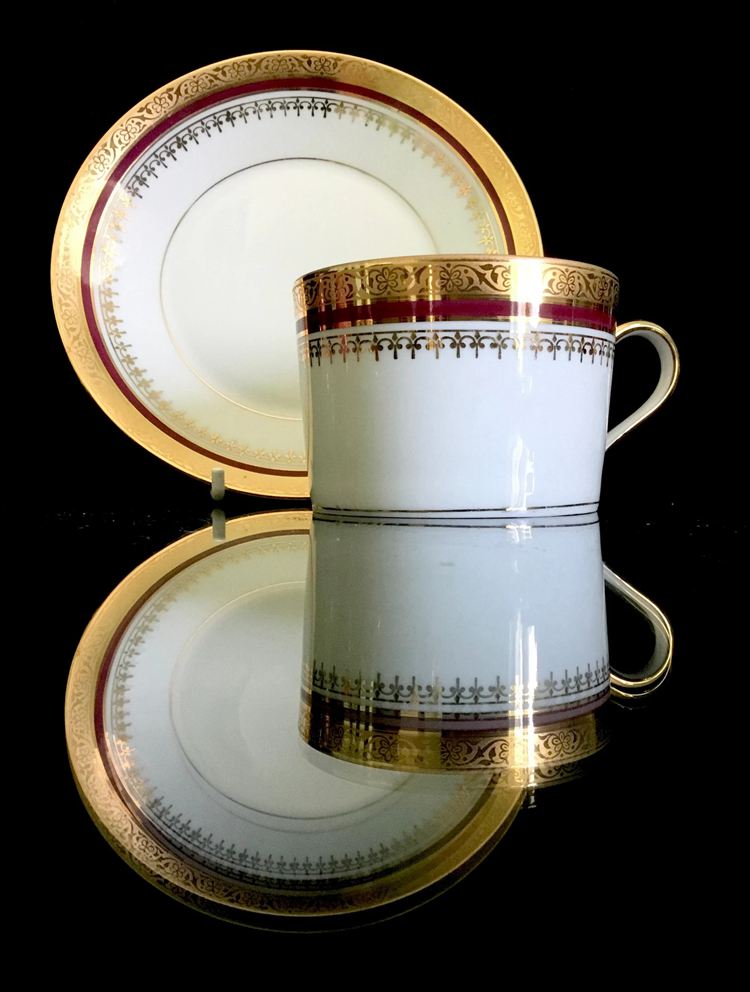
6. No pattern: The teacups that are considered to be the most precious are those that do not have a pattern name but instead have magnificent hand-painted decorations and gilding on them.
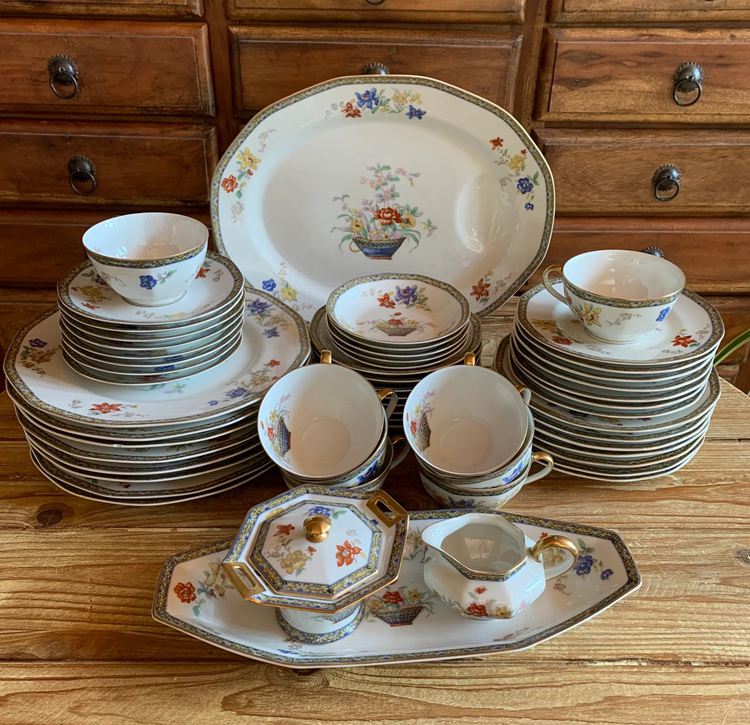
Wedgwood
Wedgwood was incorporated at the same time as handles were being added to teacups in Europe, and the company’s history is inextricably tied to the tea service.
Many of the pieces are constructed out of jasperware, which is a kind of china that has a matte finish and is decorated with applied embellishments. The Wedgwood backstamp changes according to the time period, but it almost always includes the company name and an image of an urn.
Identifying the patterns on pieces of Wedgwood china may be an intriguing activity, and the following are a few of the designs that you might wish to search for in teacups:
7. Patrician: The Patrician design was first introduced in 1927. It is an all-white pattern with intricately embossed flowers and foliage.
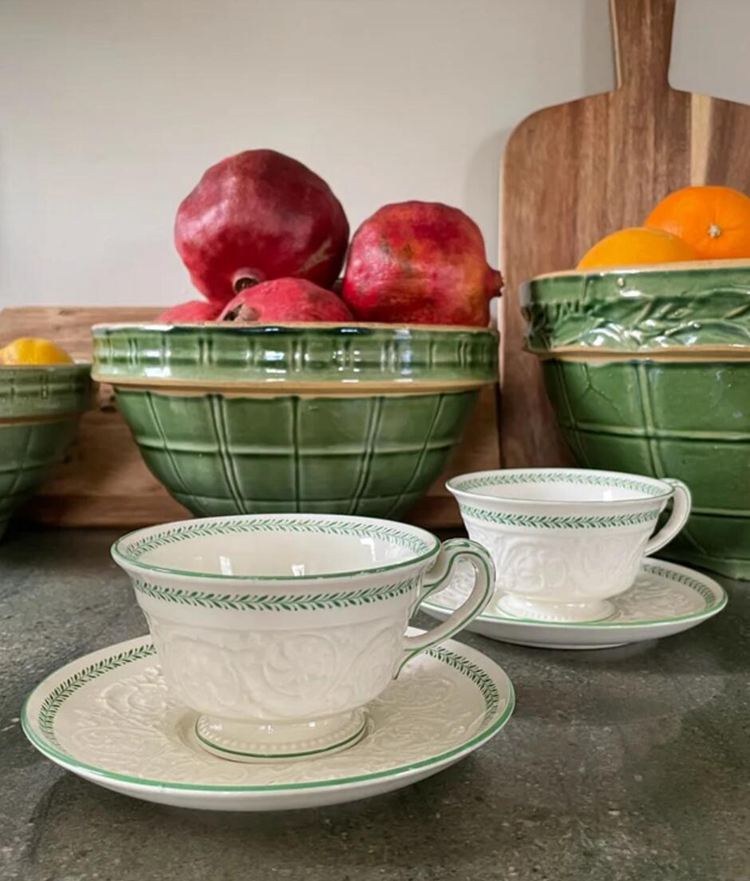
8. Cream Color on Lavender (Jasperware): This light blue/ lavender Jasperware design was available in various different forms, some of which date to the 1950s and others of which date even farther back in time.
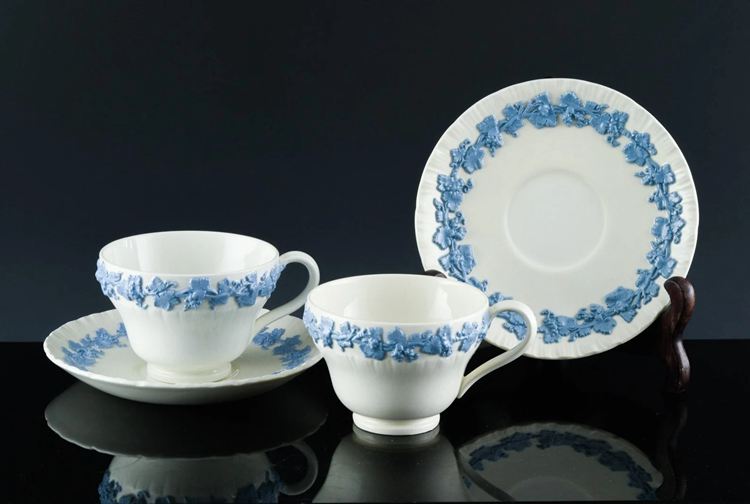
9. Columbia White: It was a design that was introduced in 1924 and featured gold griffons and pink flower sprays set on a white backdrop.
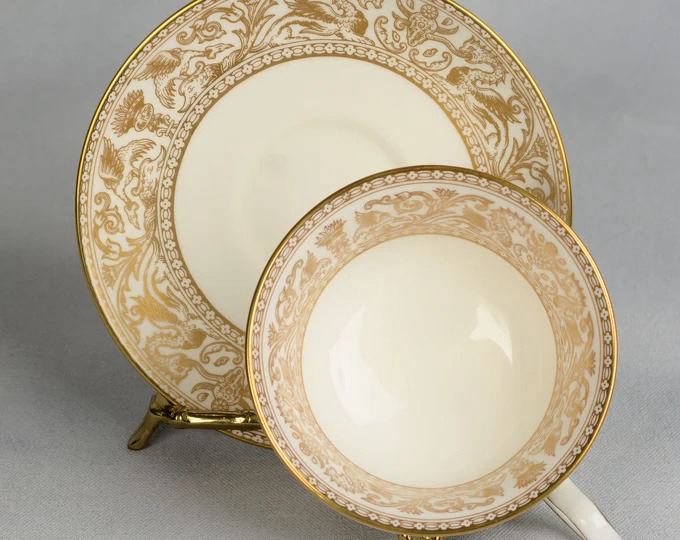
Haviland
Since it was first manufactured in the Limoges region in 1855, Haviland china is technically considered to be a kind of Limoges porcelain. The firm specialized in producing exquisite porcelain, much of which had intricately hand-painted flower designs.
New York was also the location of the production of certain Haviland items. Teacups made by Haviland might have a variety of back stamps, but the majority of them have the brand name Haviland and often also the Limoges area.
Collectors of teacups often want to include examples of many patterns in their collections:
10. Rosalinde: This design was introduced in 1942 and is known as Rosalinde. It is characterized by a scalloped cream rim and exquisite flowers.
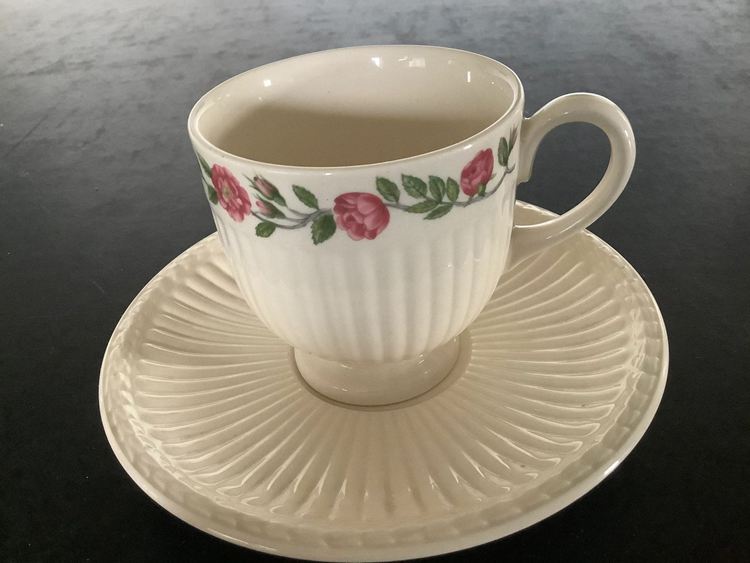
11. Chambord: Chambord is a beautiful design from 1922 that is cream-colored and has birds nestled within the teacups.
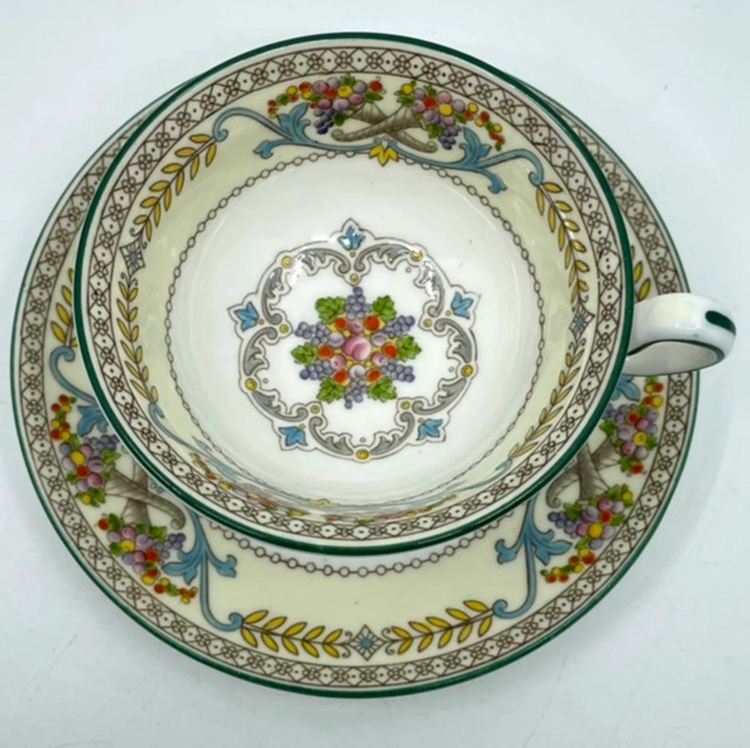
12. Frontenac: Teacups in this pattern, which is called Frontenac, feature a straightforward design that is embellished with gold leaf and delicate pink flowers.
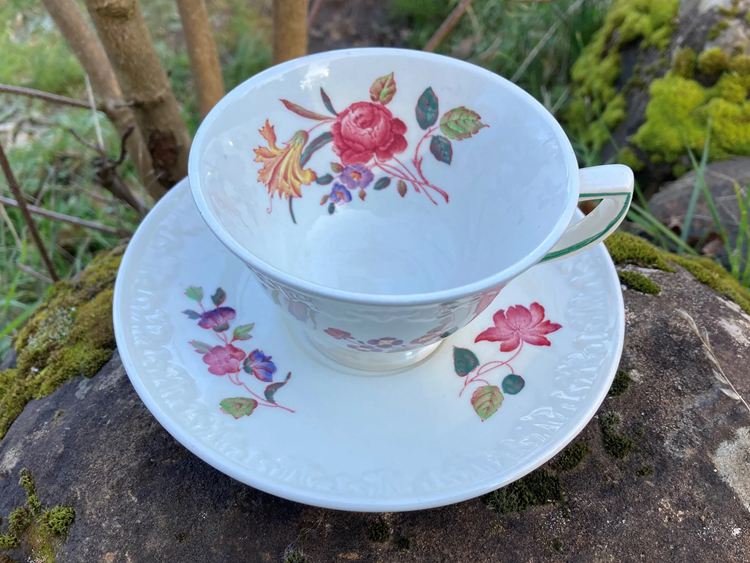
Meissen
Meissen is one of the most well-known names in antique china production in Germany, and there’s a good reason for the brand’s widespread renown. Pieces of early porcelain, some of which may date back to the 1700s, may command very high prices.
On the other hand, there are a number of items that were produced throughout the 19th century that have ornamentation that is so exquisite that collectors crave them. The traditional backstamp for Meissen consists of two swords that are crossed over one another.
However, some pieces also include an oval. Teacups were available in a wide variety of designs, some of them resembling occupied japan patterns. They are as follows:
13. Blue Onion: This pattern has tiny blue blossoms on a plain white background. It is a rather basic design. Teacups often have scalloped sides, although sometimes they have flat bottoms instead.
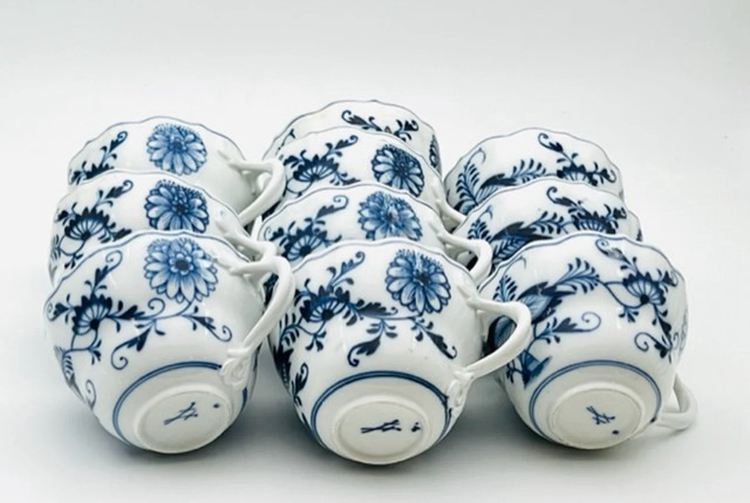
14. Rose Pink: It has a white backdrop that displays a gorgeous pink rose and green greenery. The scalloped or flat sides of the teacups have a gold rim that borders them.
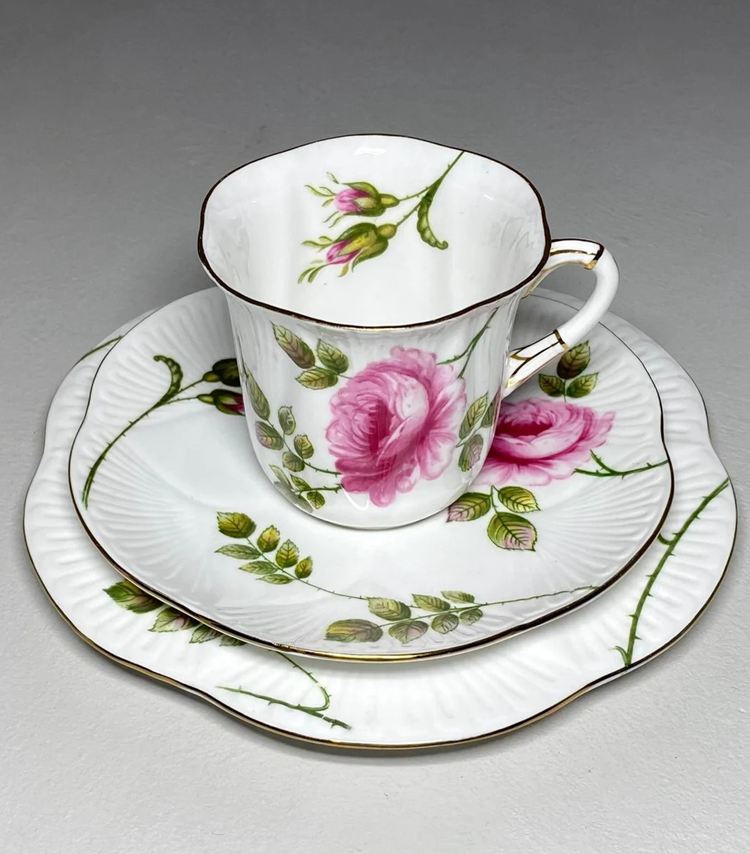
15. Scattered Flowers: Beautiful Tea cups with the “Scattered Flowers” patterns, which date back to 1820 and have floral designs in cream and a variety of colors, are hard to come by, but collectors want them.
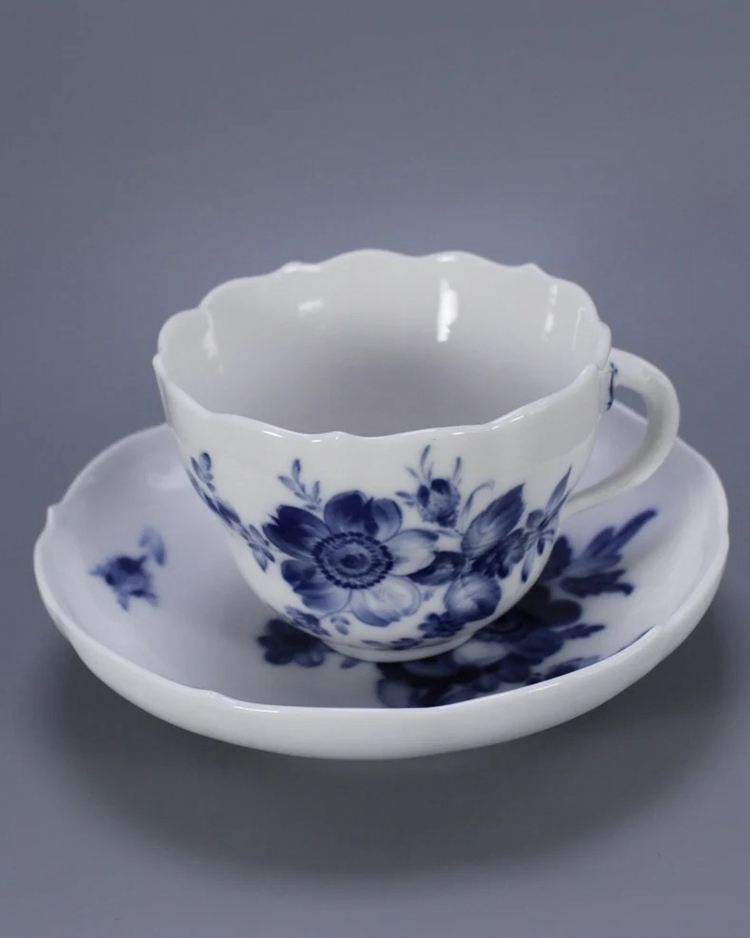
Spode
Spode was another early brand in the porcelain industry, and the company’s pretty tea cups are much sought after by collectors.
Spode is well-known for its transferware, with some of its blue and white designs continuing to be manufactured more than two centuries after they were first introduced.
Marks on these pretty tea cups may take a few different forms, but they almost always include the name Spode and state that the cup was manufactured in England. Consider any of these well-known Spode designs for your next purchase:
16. Blue Italian: This design of tea cup, which started production in 1816 and is the company’s oldest running pattern, depicts lovely sceneries on each teacup and is known as Blue Italian.
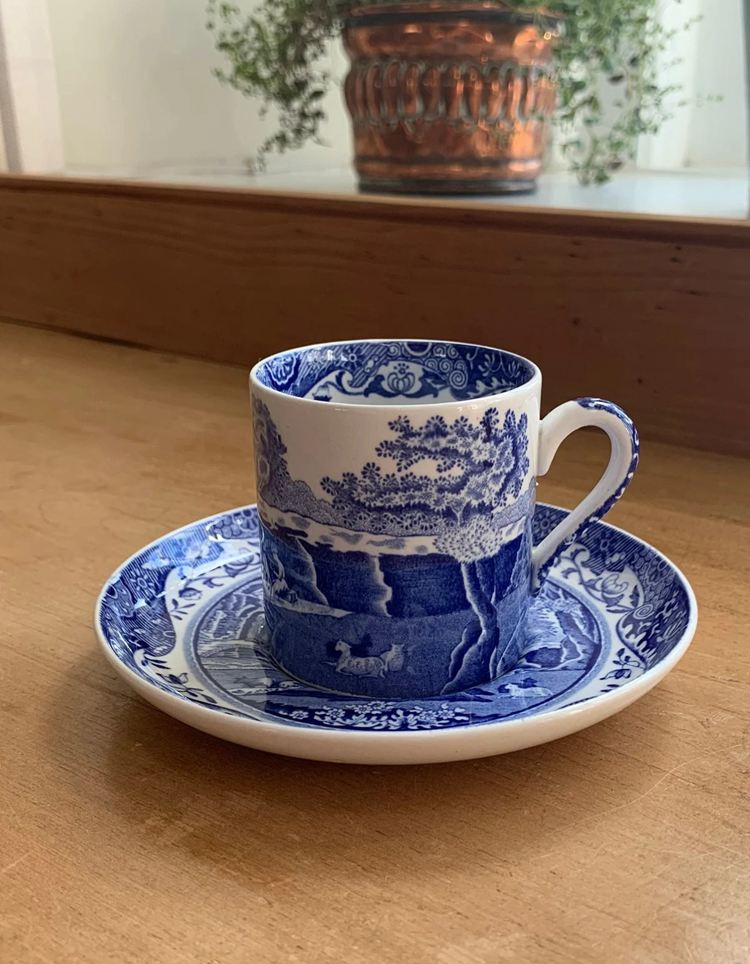
17. Billingsley Rose: This white design from the 1920s in valuable antique tea cups has pink flowers and a lovely scalloped border. It is called Billingsley Rose.
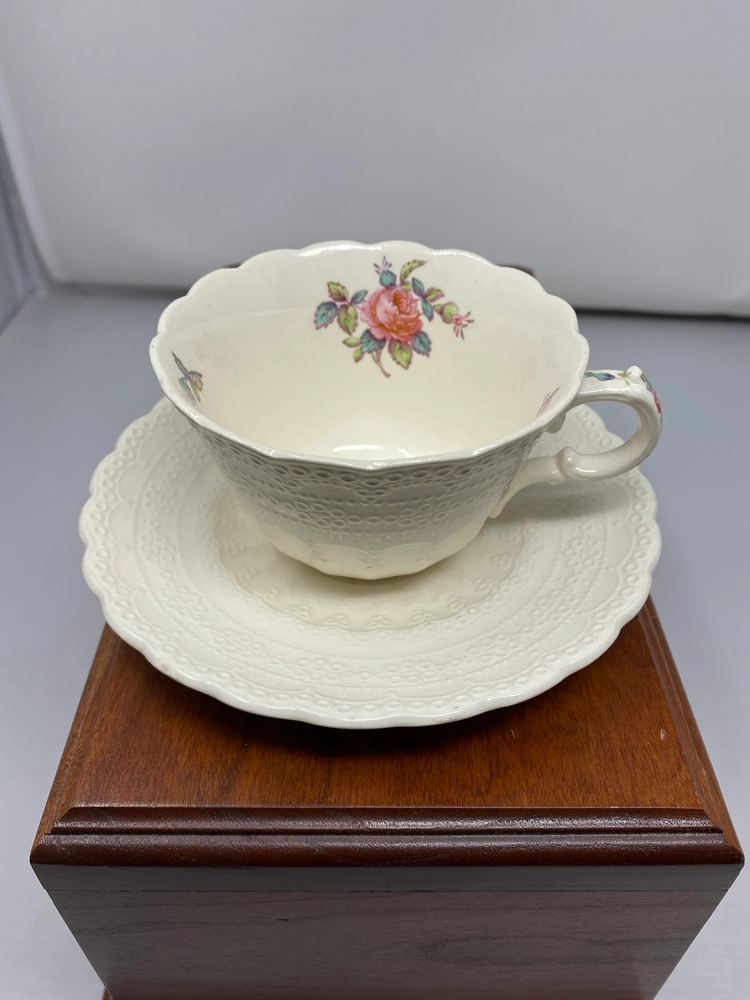
18. Rosebud Chintz: It has vintage patterns that were introduced in 1954. It is characterized by vintage teacups that feature a floral design that is repeated all over the cup.
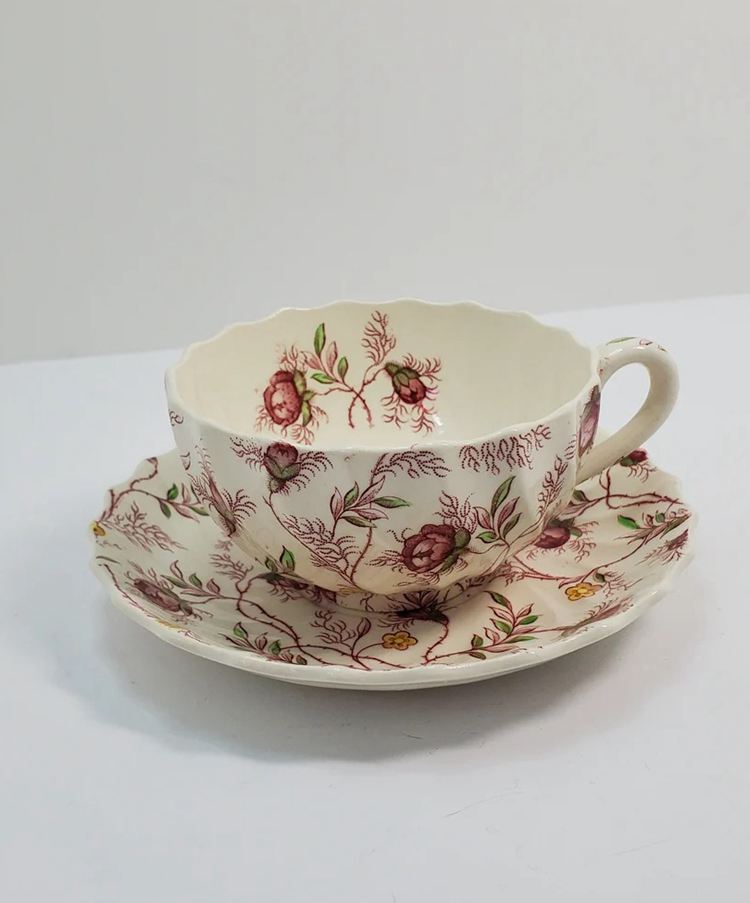
What are antique tea cups made of?
Bone China: The ingredients needed to make bone china include bone ash, crushed stone, and clay. The end result has a moderate amount of translucency. Ivory coloration predominates most of the time.
Hard Paste Porcelain: Kaolin (clay) and/ or powdered alabaster are the primary components of hard-paste porcelain. This was first manufactured in China and is a widespread item seen in traditional Chinese artwork.
It will have a whiter appearance overall. The sound produced by tapping on hard Chinese porcelain with your finger will have a higher pitch.
Soft Paste Porcelain: Clay from the area is used to make soft-paste porcelain rather than Kaolin from China. Because of this, the final product had a smoother texture. It manifests itself to be mostly white in hue.
The feeling of sipping from a real bone china cup is something that may be enjoyed. The tastes and aromas of the teas are not absorbed by bone china in the same way that they are by other types of ceramics.
Therefore, drinking from bone china will only impart the taste and scent of the tea itself to the drinker. Nothing would be added or taken away. Hence, this is unadulterated tea.
Where to Shop For Antique teacup collection?
If you are interested to shop for antique teacups, it is important to take the time to educate yourself on their worth. If you are aware of how much the teacup is worth, you may avoid making financial mistakes.
When making purchases online, it is imperative that you read and comprehend the seller’s return policy completely before making any purchases. The following sites are reliable to buy or sell the teacups:
- Etsy
- eBay
- Sotheby’s
Take Away
Many individuals find enjoyment in the pastime of collecting vintage teacups and other items related to tea time. It is a privilege to be able to include these stunning antiques in one’s routine living activities.
Old Japan and England collectible bowls, tea cups, and other items have a high value and are often presented at garage sale against a certain pattern number.
A reassuring custom that dates back many years involves pouring tea from a unique teapot into aesthetically pleasing cups and drinking tea while doing so. These priceless heirlooms may be passed down through many more generations if they are carefully preserved.





![Where To Sell Antique Furniture In 2022 [Ultimate Guide]](https://www.jacquelinestallone.com/wp-content/uploads/2022/09/Etsy-Your-Place-To-Buy-And-Sell-All-Things-Handmade-600x450.jpg)


